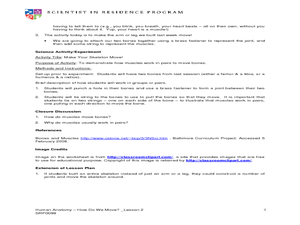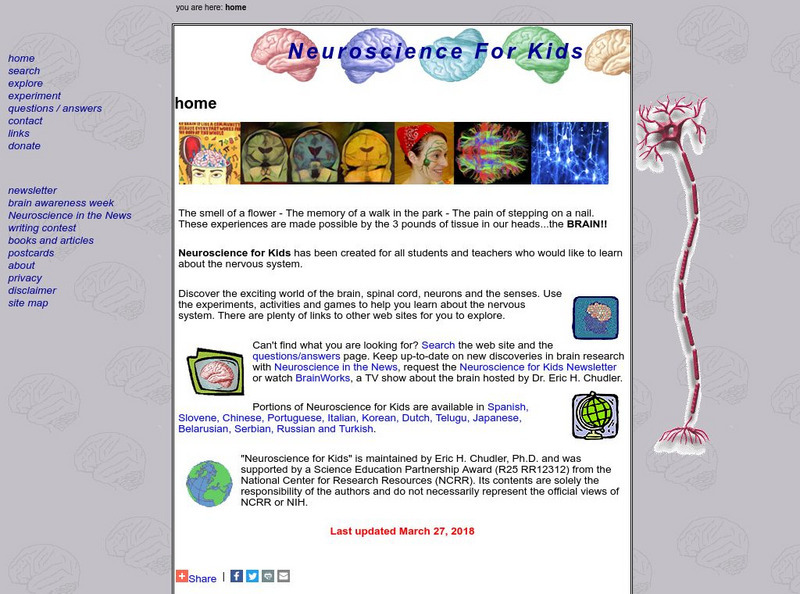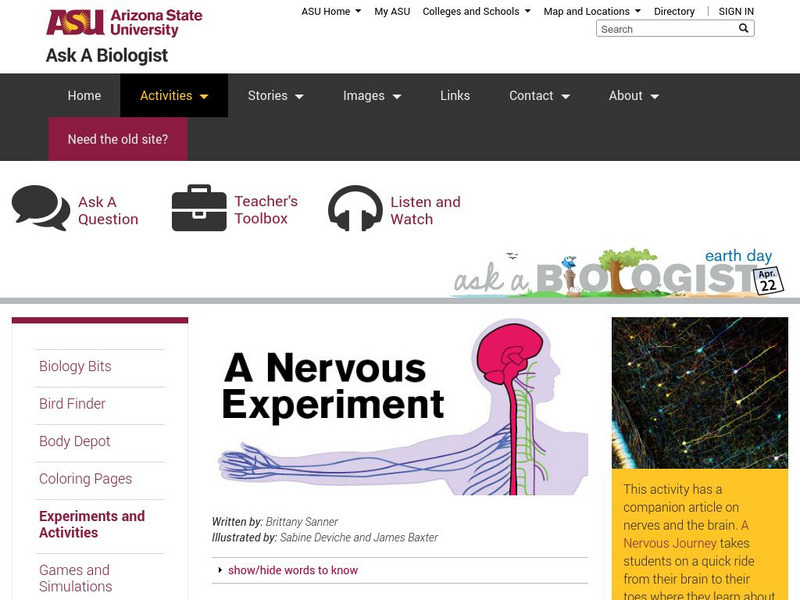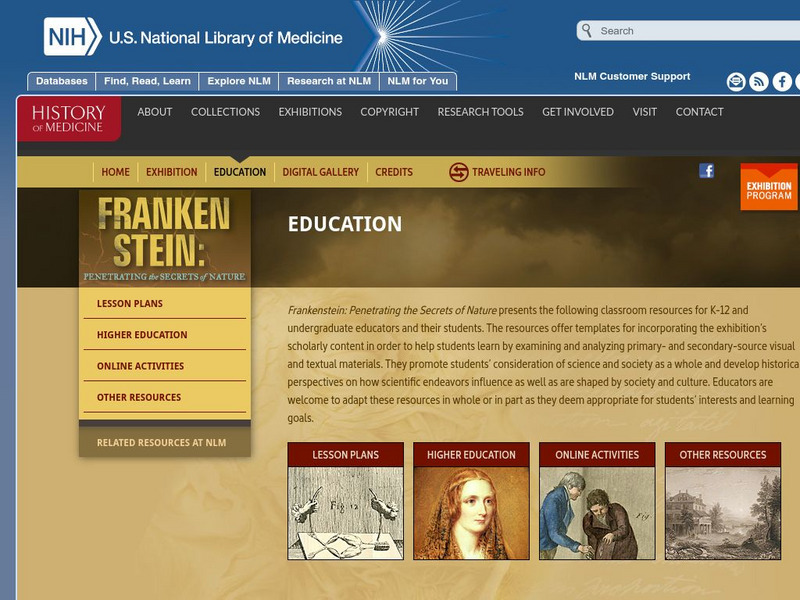Curated OER
Human Anatomy - How Do We Move?
Fifth graders discover how blood moves around the body. In this circulatory system lesson, 5th graders feel their pulse before and after exercise. Students count their heart rate. Students use the scientific method to record...
University of Washington
University of Washington: Neuroscience for Kids
Created for all students and teachers who would like to learn more about the nervous system, this extensive University of Washington site offers information, resources, games, and activities galore. Offers dozens of links to related sites.
Arizona State University
Arizona State University School of Life Sciences: A Nervous Experiment
How do you know when your hand touches something? How do you know if something brushes against your shoulder? Think about your fingertip, arm, and back. In which of these places might your nerves be closer together? Review the concept of...
Other
On Science: Addicting Kids to Nicotine
Summarizing research found at the Mayo Clinic, this article explains why kids, who have only smoked a few cigarettes, "experience the same symptoms of nicotine addiction as adults who smoke heavily." Learn about how nicotine affects the...
Treehut
Suzy's World: Brain
Use this fact sheet to find out how your brain actually works and try an experiment to tease your brain.
Treehut
Suzy's World: Touch
At this site find out how you can feel hot and cold and try this experiment using your sensory nerves.
National Institutes of Health
National Library of Medicine: Electricity, Frankenstein, & the Spark of Life
Using an online exhibition, investigate how Mary Shelley's horror science fiction story, Frankenstein, reflects the knowledge and studies of electricity, and how those fictional ideas are used in modern medicine.




